Gantt charts have always been a favorite tool for planners. But we know not everyone’s a big gantt chart fan.
At TeamGantt, we created different project views to make it easier for you to get your whole team on board in a single tool. That way you don’t have to chase updates down from multiple tools just to get a handle on project status.
Let’s take a look at the views you have available and how you and your team can use them effectively to deliver awesome work on time and budget.
Views for creating and managing projects
Views for getting work done
Gantt view
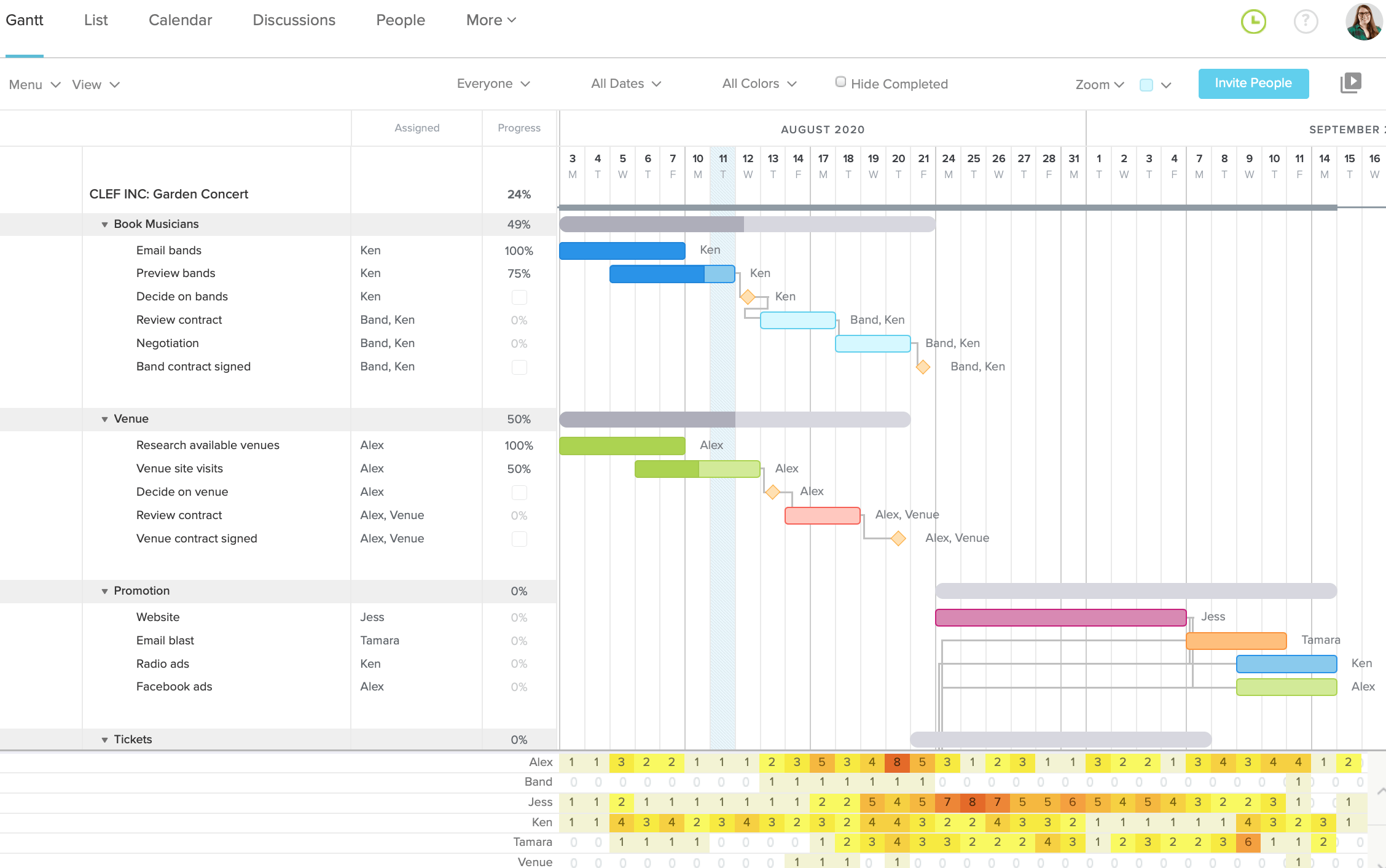
Plan and schedule project timelines
Every project runs on a schedule, whether you do work in sprints or use a waterfall approach to knock out tasks. The gantt chart enables you to map out a project plan and adjust tasks and timing quickly with drag and drop scheduling.
Use these features to build your project timeline in the gantt chart:
- Dependencies: Unique to Gantt view, dependencies enable you to identify dependent tasks on the plan so work gets done in the right order.
- Milestones: Track important meetings, deadlines, approvals, and deliverables by adding milestones to your plan.
- Task subgroups: Make your plan super-skimmable by organizing tasks into subgroups, and build your plan out more quickly by duplicating task groups in the gantt chart.
This step-by-step tutorial shows you how to create a project plan in Gantt view.

Visualize the project plan
The gantt chart is the best way to see your project’s big picture at a glance. This comes in handy for planning, as well as communicating the plan to your team and stakeholders. After all, everyone should understand how their work fits into the project as a whole so they know what happens if they’re late and how it impacts the overall project timeline.
See different ways you can share your gantt chart with others.
Manage team workloads
Overloading your team leads to burnout and ultimately puts project deadlines at risk. Gantt view empowers you to make smart decisions about project schedules and assignments so your team stays productive without being overworked.
Simply open the Workloads tab at the bottom of your gantt chart for a heat map of your team’s workload. From there, you can see who’s busy when—and who’s got room to take on new tasks—across all your projects.
Watch this video to see how team availability works.
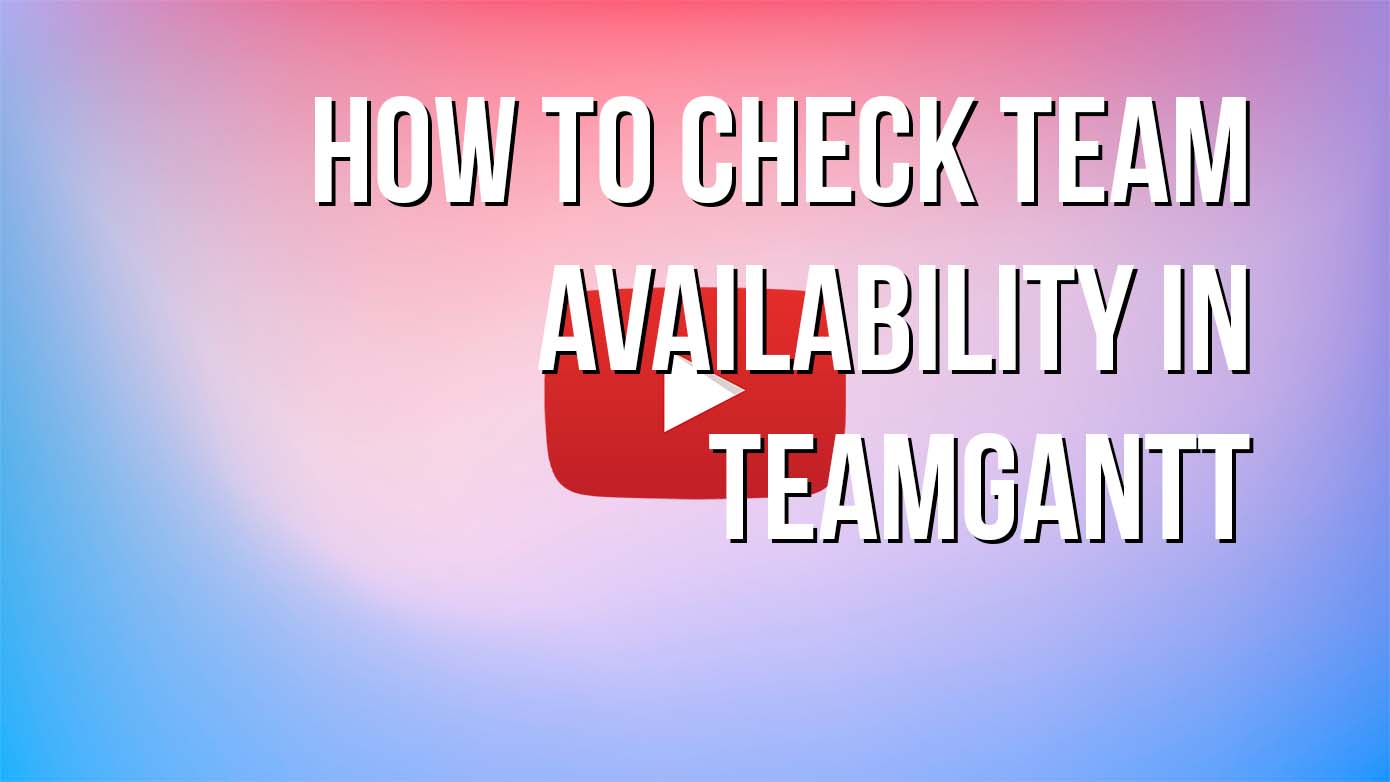
Track actual progress against your original plan
If you’re on the Advanced plan and use hourly estimation and time tracking, you can spot potential overages or delays with our hourly progress vs. task progress feature. The striped line at the center of each taskbar indicates how your budgeted hours compare to the actual time or progress that’s been tracked on a task.

Striped line color: Estimated hours vs. tracked hours
- If the striped line is green: You're right on track! Actual time tracked has not exceeded the estimated hours for that task or group.
- If the striped line is red: You've gone over the budgeted hours. Actual time tracked has exceeded the estimated hours for that task or group.
Striped line length: Tracked time vs. % complete
- If the striped bar is shorter than the progress indicated on a task or group: The time tracked for this task or group is pacing well and is not in danger of exceeding estimated hours. Hooray! Looks like your project will be on time and budget.
- If the striped bar is longer than the progress indicated on a task or group: This task or group is at risk for overage. This means the percentage of tracked vs. estimated hours is higher than the percentage of progress that's been made on the task or group to date. Be sure to investigate why this is happening. It'll help you plan better next time around!
Conduct project post-mortems
Ever plan a project, fall behind, and wonder: How did we get off track? A baseline is a quick snapshot of the project at a given point in time, and it’s perfect for assessing what went well—and what didn’t—in project post-mortems or retrospectives.
Use baselines to compare your original timeline projections with the actual timeline of the project. This will help you determine which tasks delivered on time or ahead of schedule and which ones got delayed so you can improve your planning accuracy the next time around.
In Gantt view, you can create as many baseline sets as you need to monitor the progress of your project. Here’s a 30-second look at how baselines work in TeamGantt.
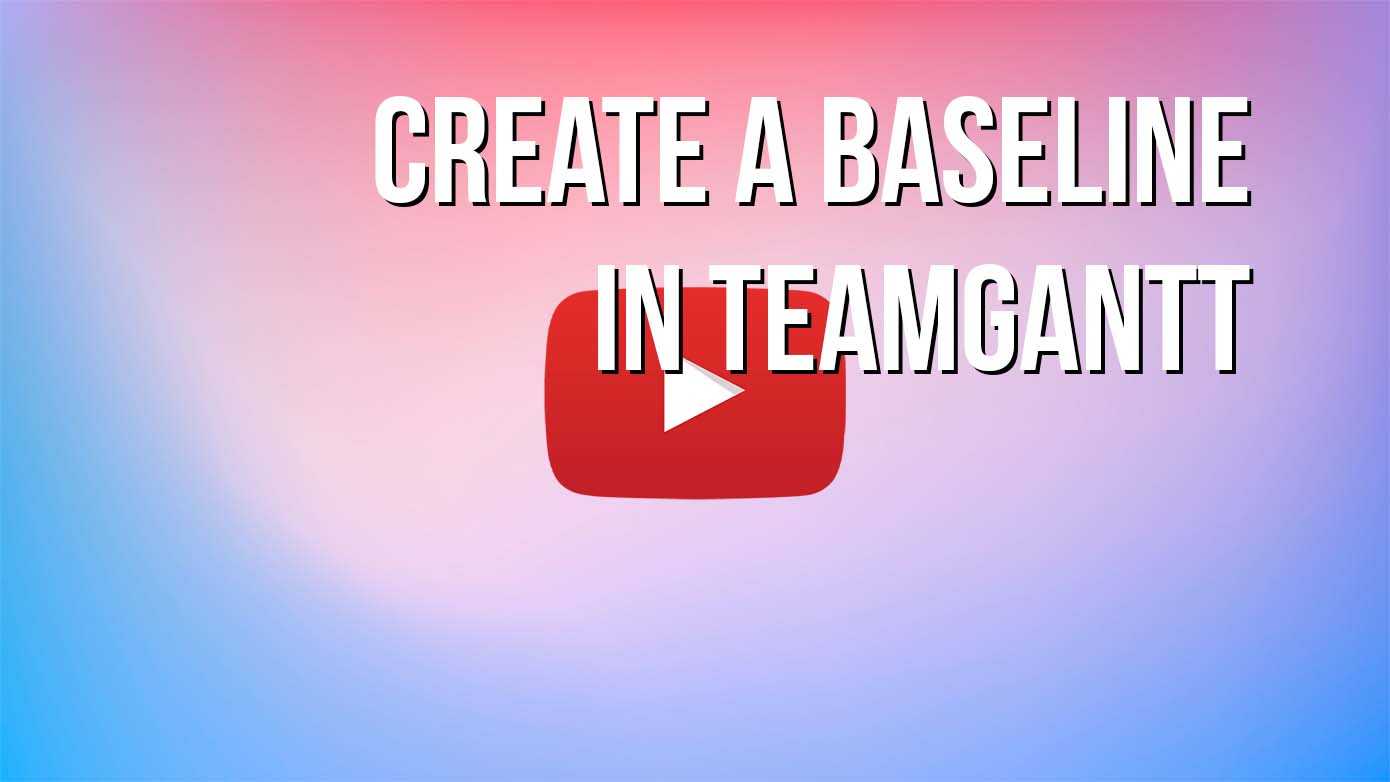
List view

Update tasks and review project status in meetings
List view is designed for folks who want a clean and simple view of the project without having to navigate a gantt chart. You can drag and drop tasks to rearrange the order, update progress, track time, or collaborate on tasks easily from List view.
This easy-to-read option is especially great for meetings and project review and is the only view that displays start and end date columns for each task. Here’s how one project manager uses List view to form the agenda for her weekly production meetings.

Calendar view

Identify potential conflicts and bottlenecks
Want to spot project collisions before they become an issue? Calendar view lets you see how tasks stack up over time so you can resolve project conflicts more easily. Open multiple projects at a time, then switch to Calendar view to see where things get too crunchy for your team.
You can also view personal task assignments in Calendar view from My Tasks. This is especially helpful for team members who want to keep an eye on their workload.
Track major deadlines and launch dates
Sometimes you need a simplified schedule of major milestones to share with your team. This content calendar project template is a great example of how to create a high-level publication schedule so everyone knows what’s going live when. It was made with Calendar view in mind.
Board view

Clear your backlog and move tasks forward
Project boards are the newest feature in the TeamGantt family, and we couldn’t be more excited! 🙌
Team members love kanban boards because it’s easy to see what they need to work on and pull ready tasks from the backlog. In TeamGantt’s Board view, they can move tasks across columns as tasks progress and organize personal assignments with their own custom board.
As the project manager, you’ll love bringing everyone together in one tool and knowing the gantt chart gets updated automatically when team members update tasks in Board view.
My Tasks view
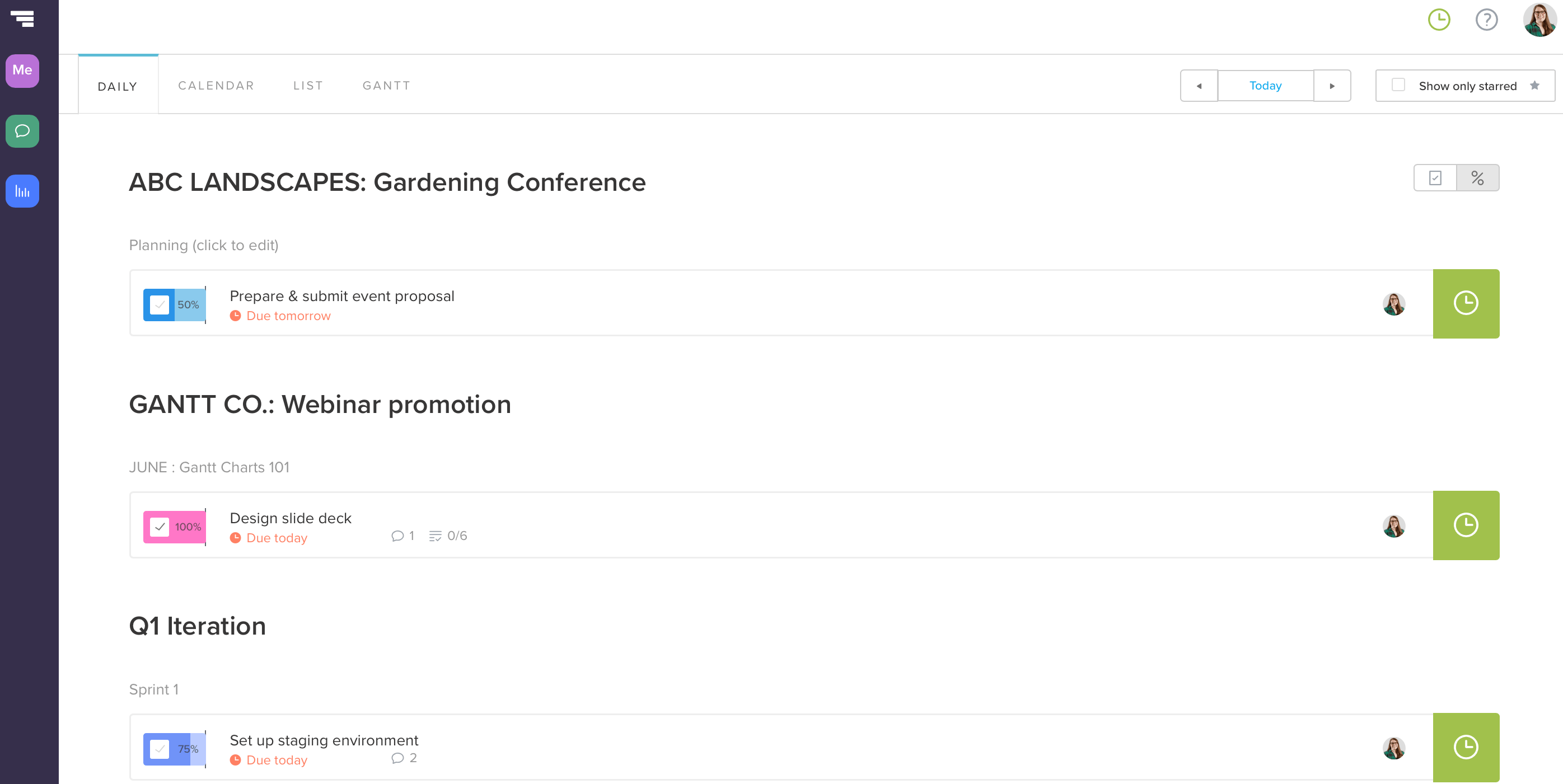
Check assignments and update task progress
My Tasks makes it easy to focus on your daily tasks across projects without other people’s assignments cluttering up your view. Think of it as your own personal dashboard. It’s perfect for getting team members on board in a single tool.
Team members can comment on tasks, update progress, and track time directly from the My Tasks dashboard and see what’s coming down the pipeline with Calendar, List, and Gantt view options available.
Setting a default view for new projects
Plan on using boards to view and manage tasks for an upcoming dev project? Or maybe you're building a content calendar for your marketing team?
In TeamGantt, you can set a default view for any new project you create. That way, everyone's looking at the same thing. Simply choose which view you want to default to under Default view during project setup.
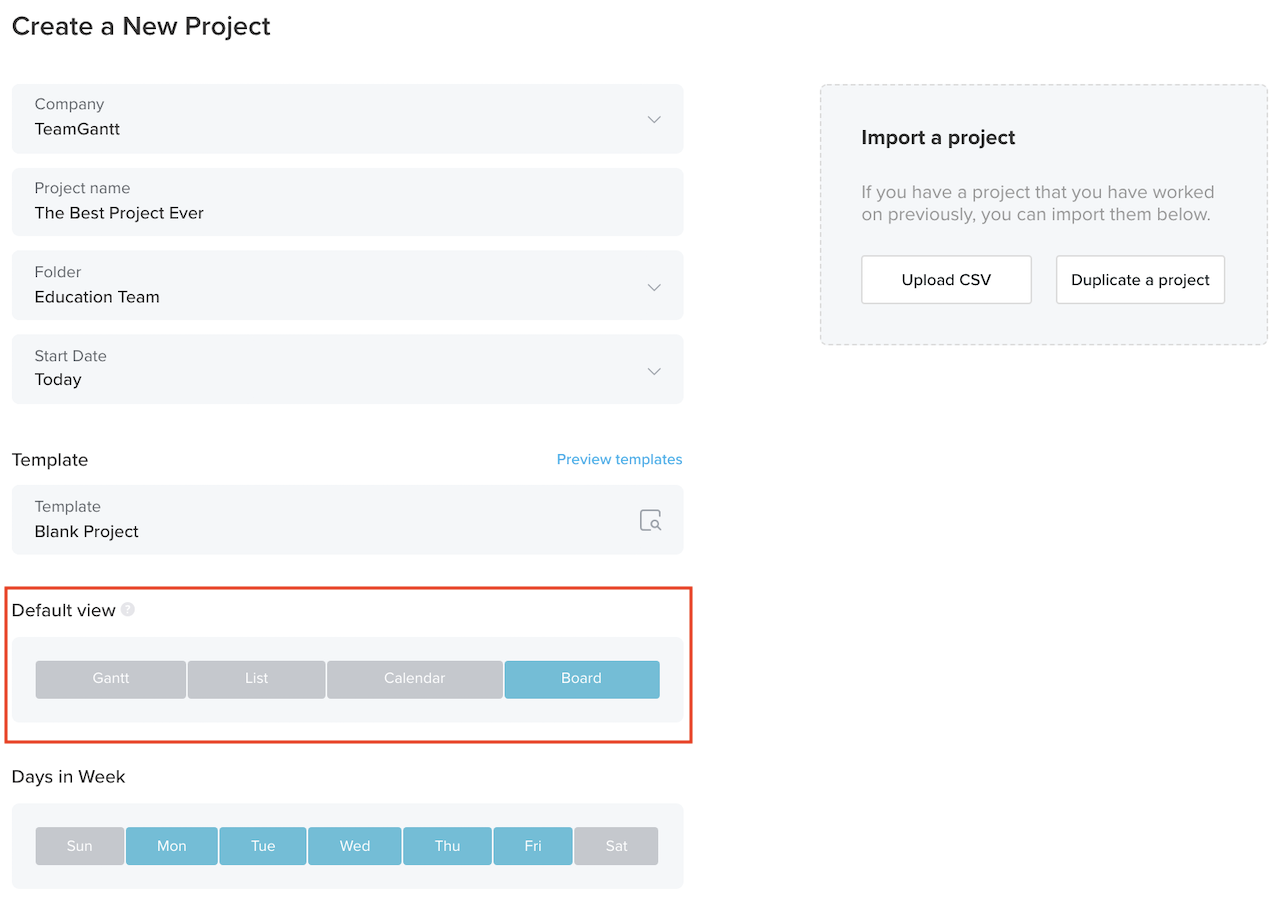
Setting a default view for a project means any new person you invite to the project will see that view from the get-go. For instance, if you set the default to Board view, new folks will be dropped directly into the project board when they pull up the project in TeamGantt.
If you decide to work from another view, don't worry! TeamGantt will remember which view you were in last so you don't have to switch every time.
Manage every project with ease
TeamGantt makes it easy to create, track, and collaborate on all your projects so nothing slips through the cracks.
Get the features you need to ensure projects finish on time and under budget—from drag and drop simplicity and team collaboration to customizable views and workload management. Best of all, it’s wrapped in a simple and intuitive interface your whole team will love. 😍
See why thousands of customers in over 120 countries use TeamGantt to make their projects shine. Give TeamGantt a free try today!







